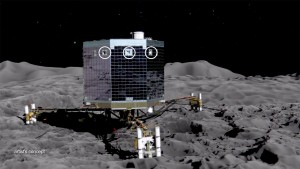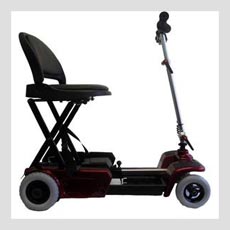Last week, the world said goodbye to the Philae Lander following an illustrious career of discovery. To many, it was an emotional moment and the culmination of one of the European Space Agency’s most successful projects. Why was this probe so important and what did it achieve?
 Beginning of the Project
Beginning of the Project
The mission of the Philae lander and the Rosetta spacecraft was one of the most ambitious in the history of the ESA (European Space Agency). It wanted to do something that nobody had ever done before – land a space probe on a moving comet. Rosetta launched in 2004 from French Guiana and took ten long years to make it to the comet. Once there, it was to launch the Philae Lander on the comet which would then carry out a number of tests and take samples and hopefully tell us something new about comets. The ESA killed two birds with one stone and plotted the path to swing by Mars on the way and take some readings.
The Churyumov–Gerasimenko Comet
As Rosetta got close to the comet, it started sending back some startling images of the strangely shaped comet. The summer of 2014 saw masses of data including photographs. On the 6th August, the spacecraft prepared for landing but the process would take several months of system checks and preparation. After ten years, they could afford no mistakes. Finally, the Philae lander detached on the 12th November and prepared for its precarious mission.
Comet landings had been attempted before, but before the Rosetta Mission none was designed to last so long. Most others had been impact where the lander would smash against the comet and acquire as much data as possible before disintegration. As it made comet-fall, the Philae Lander bounced, though that was not clear at the time. Scientists could not understand why they had received such strange data.
What Did Philae Discover?
Yet land it did and for the ESA, the hard work was about to start. Problems beset the probe from the start but ten years of preparation was not to be so easily beaten. The solar-powered batteries were inadequate and damage to the lander from its bouncing and rotation meant that the team had to come together to resolve some major issues. The probe didn’t make all the expected discoveries but considering the problems it had to overcome, the ESA retrieved a wealth of data from the comet.
- Comets are some of the first astral bodies to have formed in the early years of the universe. It was hoped to learn much about their geology, physics and chemistry to teach us about the origins of everything
- The comet has no magnetic field (surprising considering the nature of comets, their size and propulsion)
- The comet contained something called “aldehydes” which could be the building blocks of organic life
- The comet had a lot less ice than suspected
- It contained a surprising number of organic material types (16) including four never before found on comets
These were the short-term discoveries. Long-term, the data could tell us much more but at least we have the benefit of years to find out.
Saying Goodbye to Philae
The Philae Lander was naturally nearing the end of its life as the comet get farther and farther away from the sun. It could no longer sustain itself and the ESA felt it was time to let the mission go. Philae had sent no data since July 2015. The tragedy of the mission is that the Rosetta spacecraft is still active and sending data back to mission control. Yet over the next couple of months, it will be powered down and sent into a controlled crash towards the comet surface.
Amusingly, ESA social media managers engaged Twitter users by sending regular updates. Philae and Rosetta would regularly have “conversations” discussing such things as how their day went and the weather. As well as discovering information about the comet, it inspired so much public interest and that could be Philae’s and ESA’s lasting legacy.



